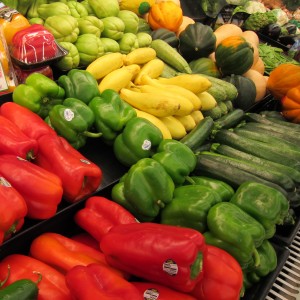What Is Overweight?
Overweight refers to an excess of body weight compared to set standards. The excess weight may come from muscle, bone, fat, and/or body water. One scientific tool to estimate a healthy body weight is a Body Mass Index (BMI), which is a measurement that compares a person’s weight and height. For children and teens, age and gender are also taken into consideration. For adults, a BMI of 25.0 to 29.9 is considered overweight, and a BMI of 30 or over is considered obese. For Asian adults, a BMI of 23.0 to 27.4 is considered overweight, and a BMI of 27.5 or over is considered obese. To calculate your BMI and see what it means to you: For adults and teens – http://cchrchealth.org/en/calculators/
What Is a Healthy Weight Loss?
Studies show that people who lose weight gradually and steadily (about 1-2 pounds per week) are more successful at keeping the weight off. Healthy weight loss is not just about a diet or program. It is about an ongoing lifestyle that includes long-term changes in daily eating and exercise habits. In the process, it is extremely important for you to have a properly planned diet, which should not only limit your calorie intake but also, more importantly, provide you with all the nutrients you need to stay health
Overview:
Sports injuries are the number ONE reason for emergency room visits among youth. The majority of these injuries are mild, but they can cause great inconveniences to the injured person. With proper precautions, many of these injuries can actually be prevented.
Common Sports Injuries:
- Bruises – Injuries in which the capillaries are damaged, allowing blood to seep into the surrounding tissues.
- Sprains – The pulling or tearing of the ligaments that join the ends of bones together. Sprains commonly affect the ankles, knees, and wrists.
- Strains – The pulling or tearing of muscles or tendons (the tissues that attach the muscles to the bones).
- Bone fractures – The cracking or breaking of bones.
- Dislocation of joints – The bones in a joint become displaced or misaligned. It is often caused by a sudden impact to the joint.
- Tearing of the Achilles tendon – The Achilles tendon is the large group of tissues that connects the calf muscles to the heel.
- Overuse injuries – Injuries such as “runner’s knee” and “tennis elbow,” that are due to overuse of a body part when participating in a certain activity
 What Is Vegetarianism?
What Is Vegetarianism?
Vegetarianism is the practice of a diet that excludes meat, poultry, and fish (including other seafood). There are several variations of vegetarianism, some of which also exclude eggs, dairy foods, or other animal by-products:
- Lacto-vegetarians: Eat dairy products, but no meat, poultry, fish, or eggs
- Ovo-vegetarians: Eat eggs, but no meat, poultry, fish, or dairy products.
- Lacto-ovo vegetarians: Eat dairy products and eggs, but no meat, poultry, or fish.
- Vegans: Do not eat any animal products.
Why Do People Become Vegetarians?
There are many reasons why people choose to follow a vegetarian diet, some of which include:
- Food likes and dislikes
- Animal rights concerns
- Religious or cultural beliefs
- Diet and health concerns
- Family decision
These are acceptable reasons for choosing not to eat meat. It is important to note that in some cases, the decision to avoid meat or to be on an overly restri
 The teen growth spurt is one of the most dramatic changes that the human body experiences. To support this major change, the body requires increased calories and nutrients. Maintaining a healthy diet not only contributes to your physical growth, but it can also help you feel better, stay healthier, and perform better at school. Below is a list of quick tips to get you started:
The teen growth spurt is one of the most dramatic changes that the human body experiences. To support this major change, the body requires increased calories and nutrients. Maintaining a healthy diet not only contributes to your physical growth, but it can also help you feel better, stay healthier, and perform better at school. Below is a list of quick tips to get you started:
- Eat regular meals, especially breakfast.
- Eat a variety of foods.
- Get lots of calcium.
- Choose fiber-rich foods.
- Drink plenty of water.
- Limit consumption of fast foods and junk foods.
Eat Regular Meals:
To meet the energy needs, teens should eat at least three meals per day: in the morning, afternoon, and evening with light snacks in between. This is the best way to maintain both energy levels and a healthy weight. When you skip meals and are overly hungry, you are more likely to choose foods that are not as healthy. Also, it is very important for you to eat breakfast! Studies show that eating breakfast can help you stay more alert at school and bette



